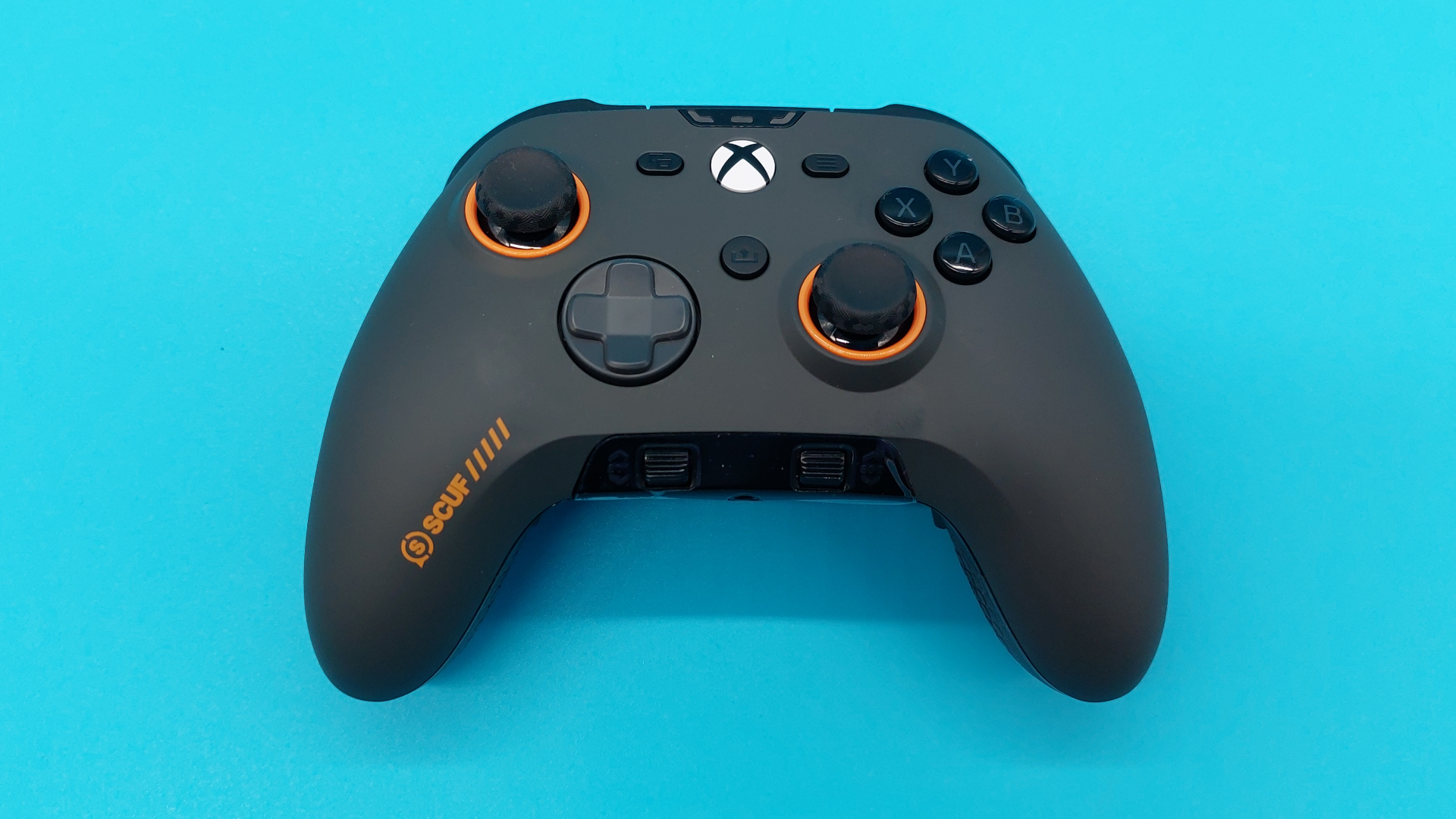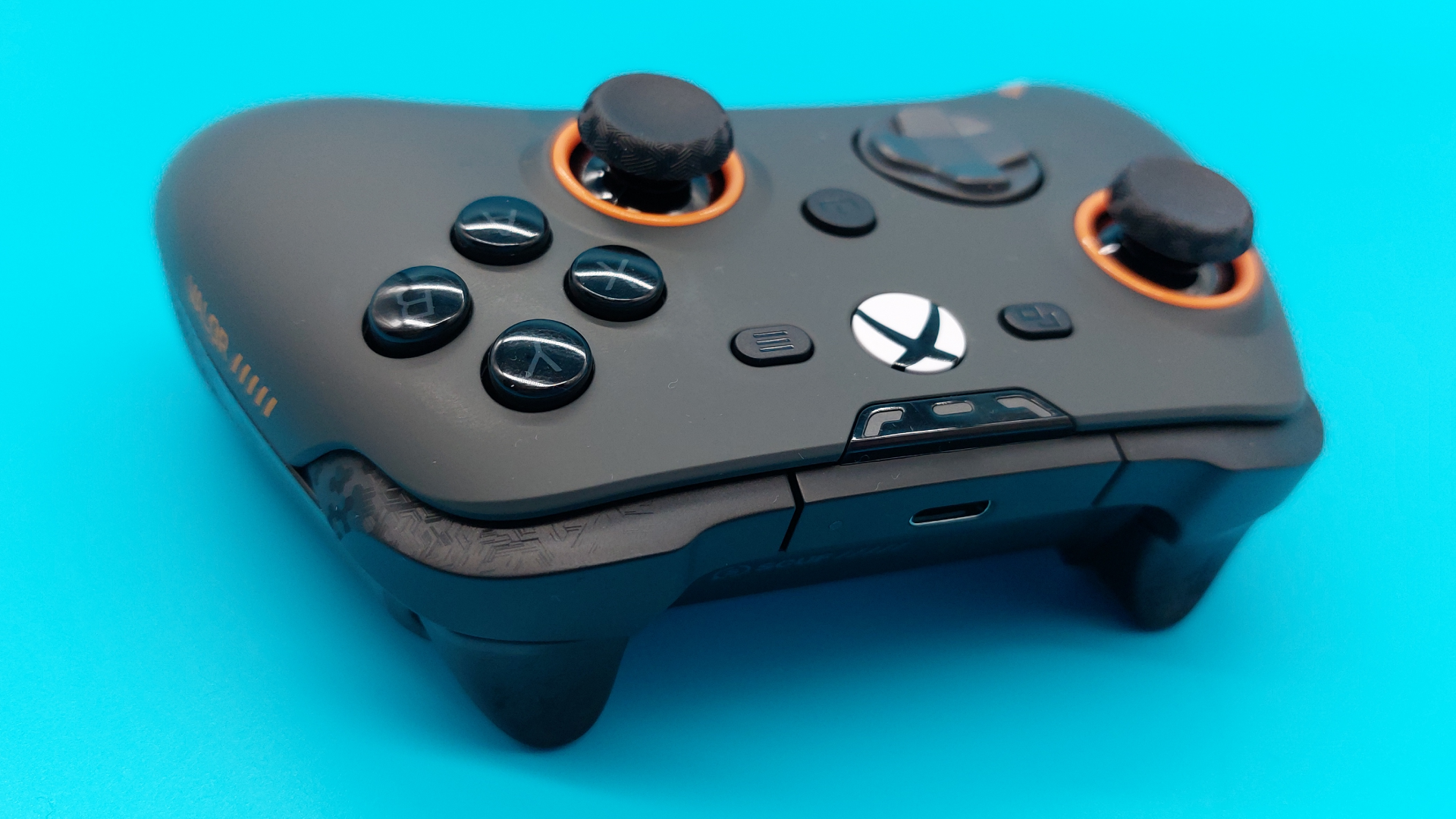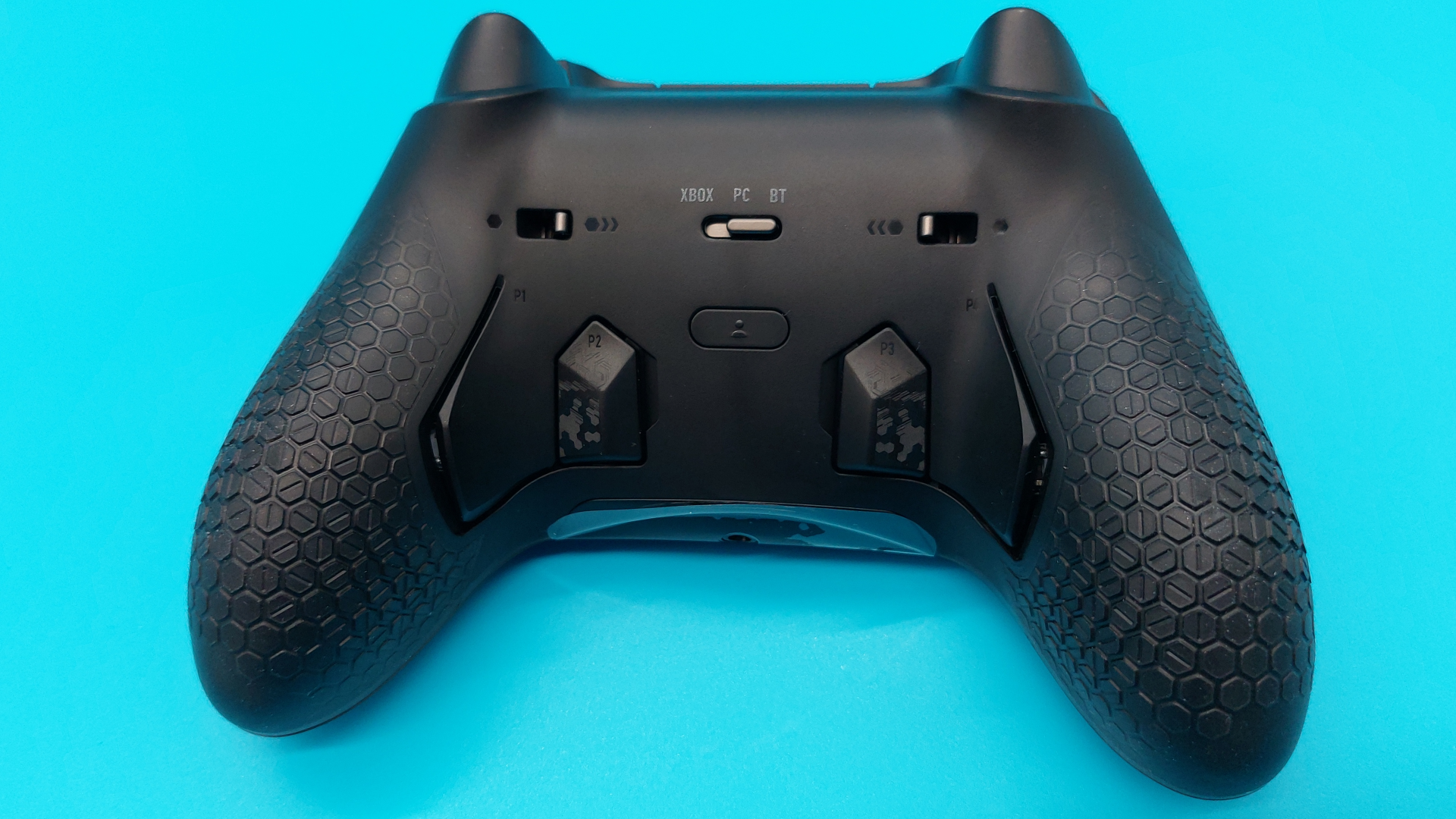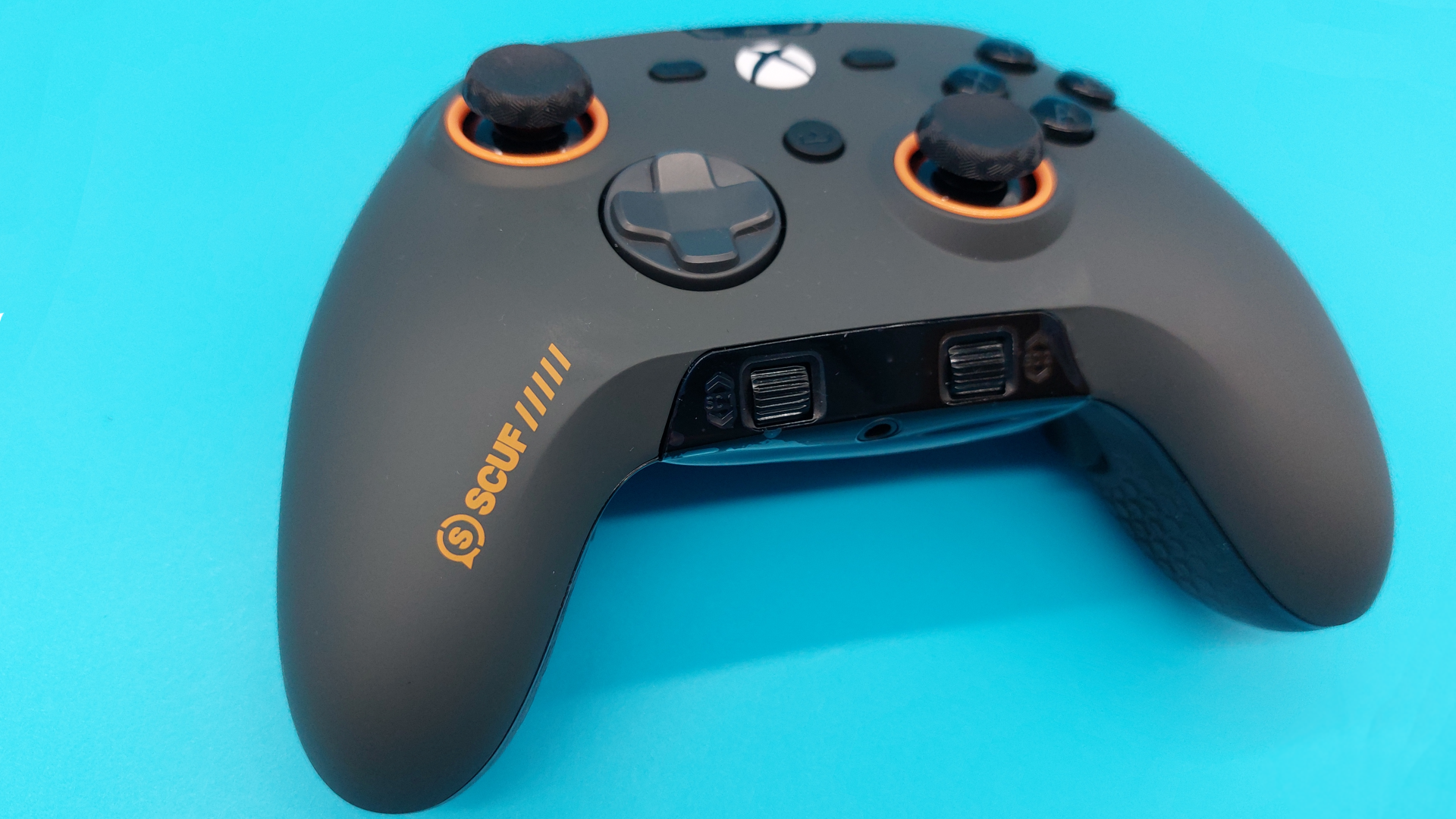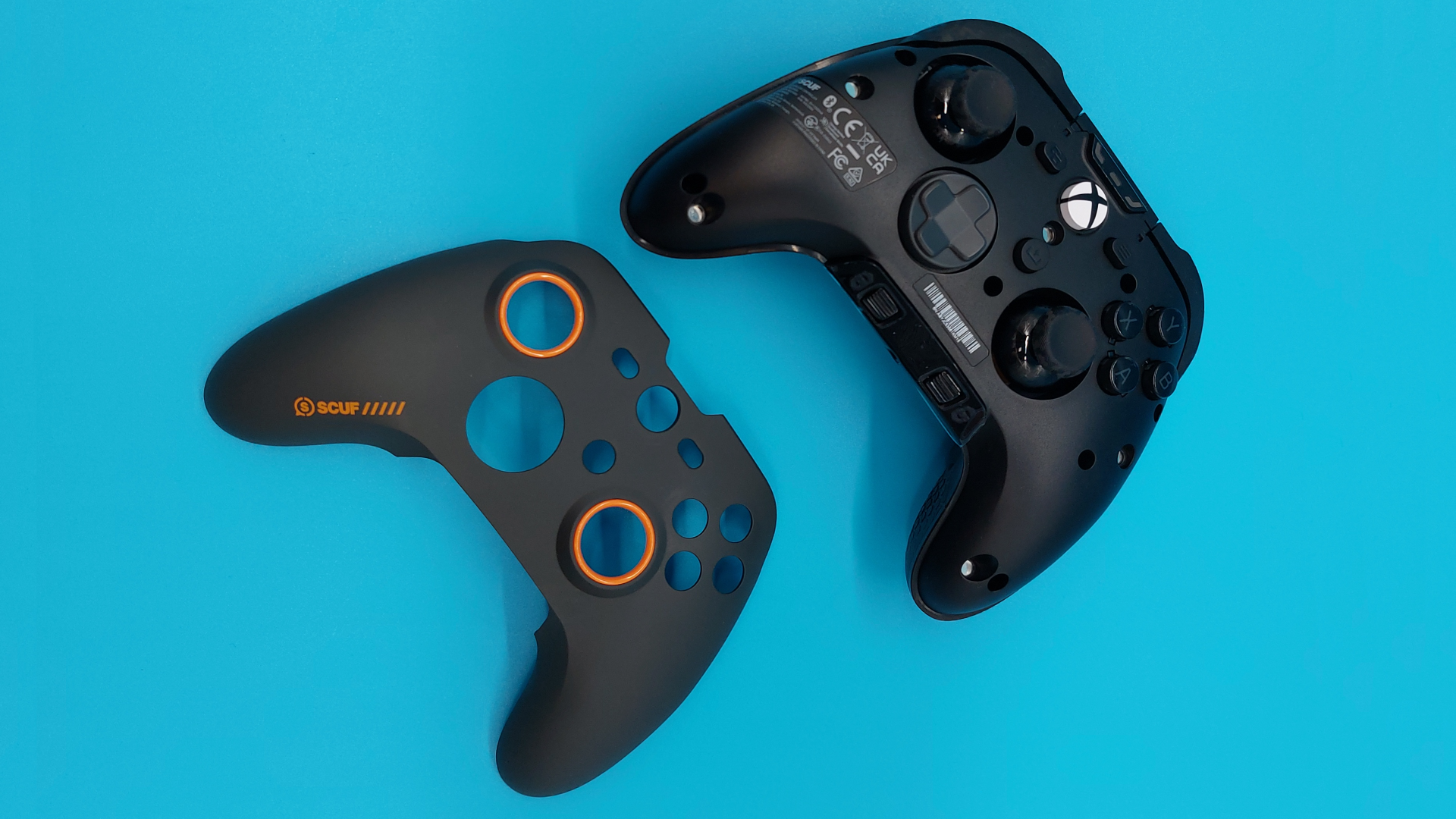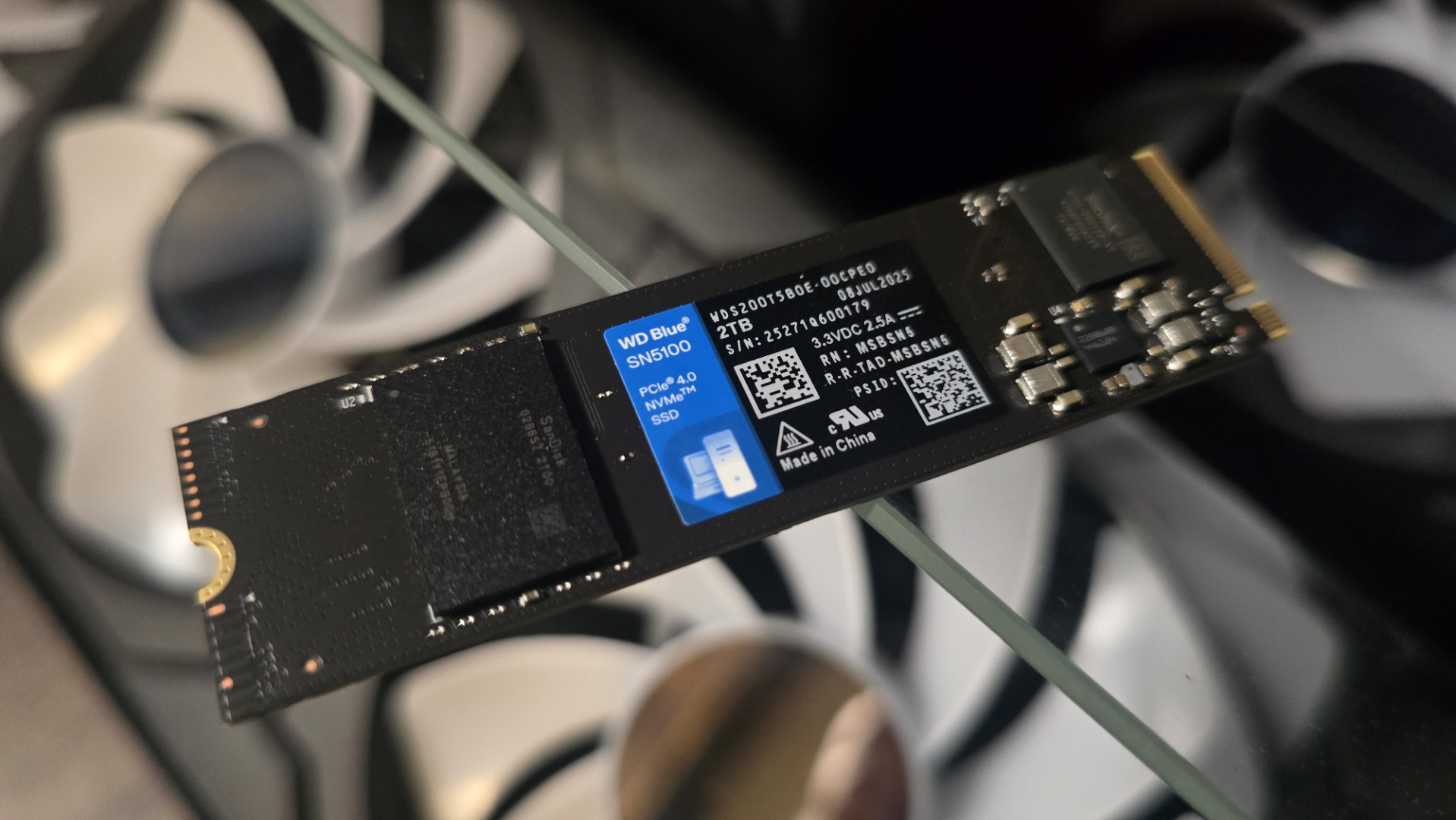Our Verdict
This wireless pro controller feels great in the hands but comes at a premium I can't really justify. Solid ergonomics and build quality make a strong case, but nearly $200 is asking entirely too much—especially with such a lacking Bluetooth mode.
For
- Extremely comfortable
- Highly customisable
- Great clicky buttons
- Robust build quality
- No iCue integration, woo!
Against
- Very pricey
- Bluetooth mode not really geared towards PC use
PC Gamer's got your back
The wireless version of the Scuf Valor Pro is finally here, offering everything we loved about the wired version, just minus the wire and all of its tangle potential. That means I'm gonna award this a high score, and we can all go home early, right? Unfortunately, even without a wire, the Scuf Valor Pro controller still gets in its own way.
Don't misunderstand, everything our Jacob loved in his wired Scuf Valor Pro review is here too—just at a much higher price point. Whereas the wired version of this controller will set you back $100, this wireless update is asking just shy of $190. Offering 'Tri-mode connectivity' for your PC, Xbox, and Bluetooth devices, it's not just the wireless functionality pushing the price uncomfortably close to 200 big ones, but new asymmetric TMR thumbsticks too.
Utilising magnetism like the Hall effect, TMR (tunnelling magnetoresistance) also offers the same longevity and effective banishment of stick drift. However, TMR is far more sensitive than the Hall effect, with the electromagnetic sensors able to pick up far slighter stick movements for an even greater level of precision—so, that's what you're paying a premium for.
However, unless you're a picky pro player, I'd argue Hall effect sticks will still suit most. Even so, as Jacob notes in his wired Scuf Valor Pro review, outside of some very specific genre examples like fighting games, the tippy top of esports still has a demonstrable preference for keyboard and mouse controls. So, who is the Scuf Valor Pro wireless controller for? Arguably, a filthy console convert like me.
In fact, I may like this even more than the DualSense Edge. Sony's similarly customisable pro effort also doesn't justify its shocking asking price, not even offering Hall effect sticks in this here year of our gourd, 2025. It also gave me a perhaps unearned dislike of remappable back buttons. On the Edge, I feel all thumbs with the default floating paddle shape of its back buttons. You can swap these out for a design that juts out, only serving to make me feel even more uncoordinated.
Oh, and the rubberised palm grips on my Edge have gone all bubbly too. Maybe my sweaty mitts harbour a uniquely corrosive quality, but the palm grips are already coming unstuck from the controller body after only a couple of years of heavy use. Add to that how I seem to always be needing to charge the blooming thing, and how's that for nearly $200? For that kind of money, you can get slightly less detailed haptics plus Hall effect sticks and triggers in the Razer Wolverine V3 Pro.
So, how does Scuf's effort stack up against that point of comparison? Feeling a bit heavier than the Edge, the Valor Pro doesn't just deftly trick my brain into going 'Oo, premium,' it also has the good sense to back it up with quality construction and ergonomic design.
Keep up to date with the most important stories and the best deals, as picked by the PC Gamer team.
Just for starters, the rubber palm grips are ruggedly textured to ensure this controller won't slip out of even the sweatiest of mitts. The contour of this controller leading from these grips and into the main controller body feels flush too, making me fairly confident these textured palm wrests aren't going to make a break for it any time soon.
And for another, the wireless Valor Pro's battery life alone puts it head and shoulders above the DualSense Edge. The 2.5 GHz mode served me well through a weekend of devil summoning and playing detective in Raidou Remastered: The Mystery of the Soulless Army straight out of the box.
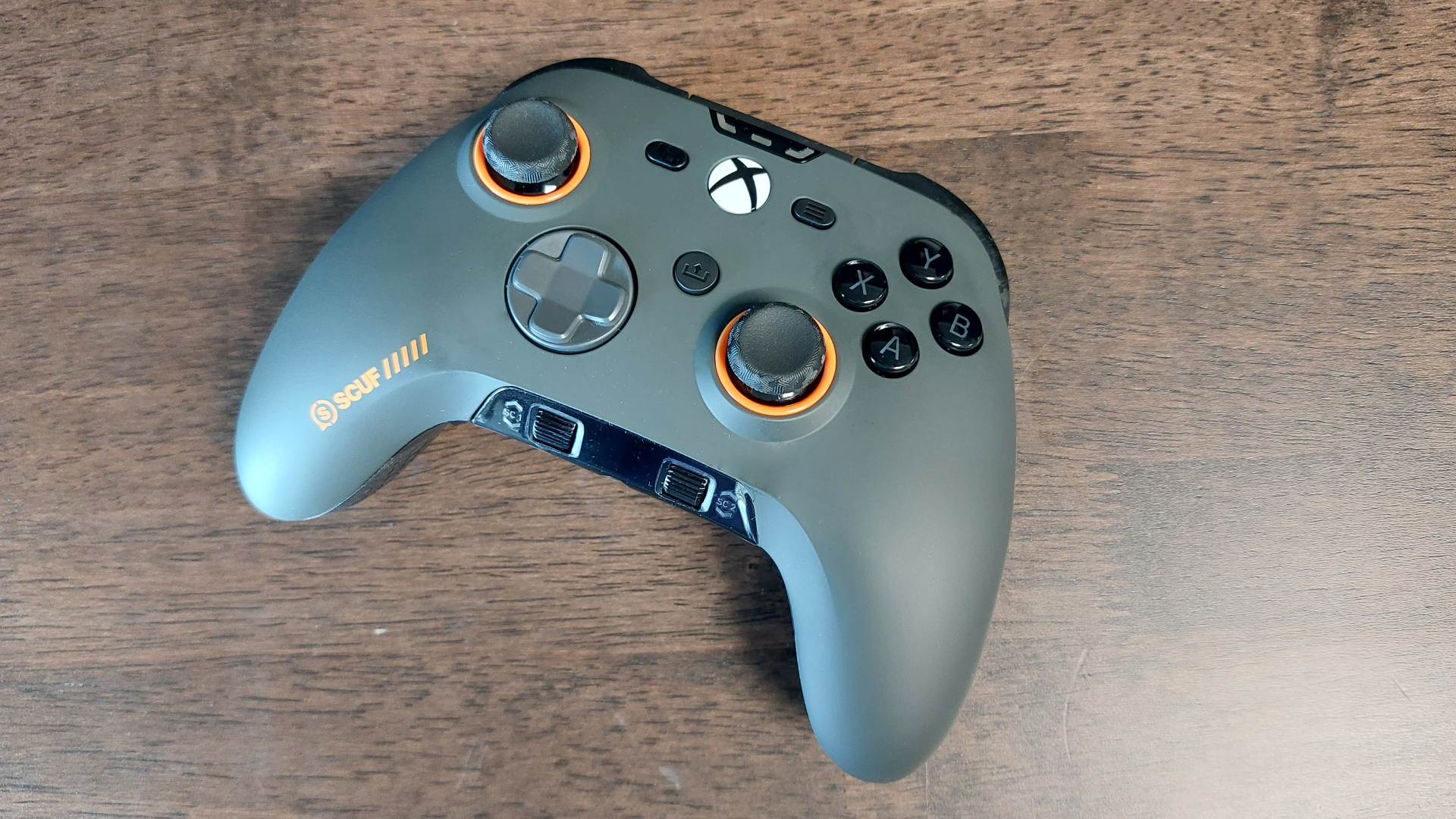
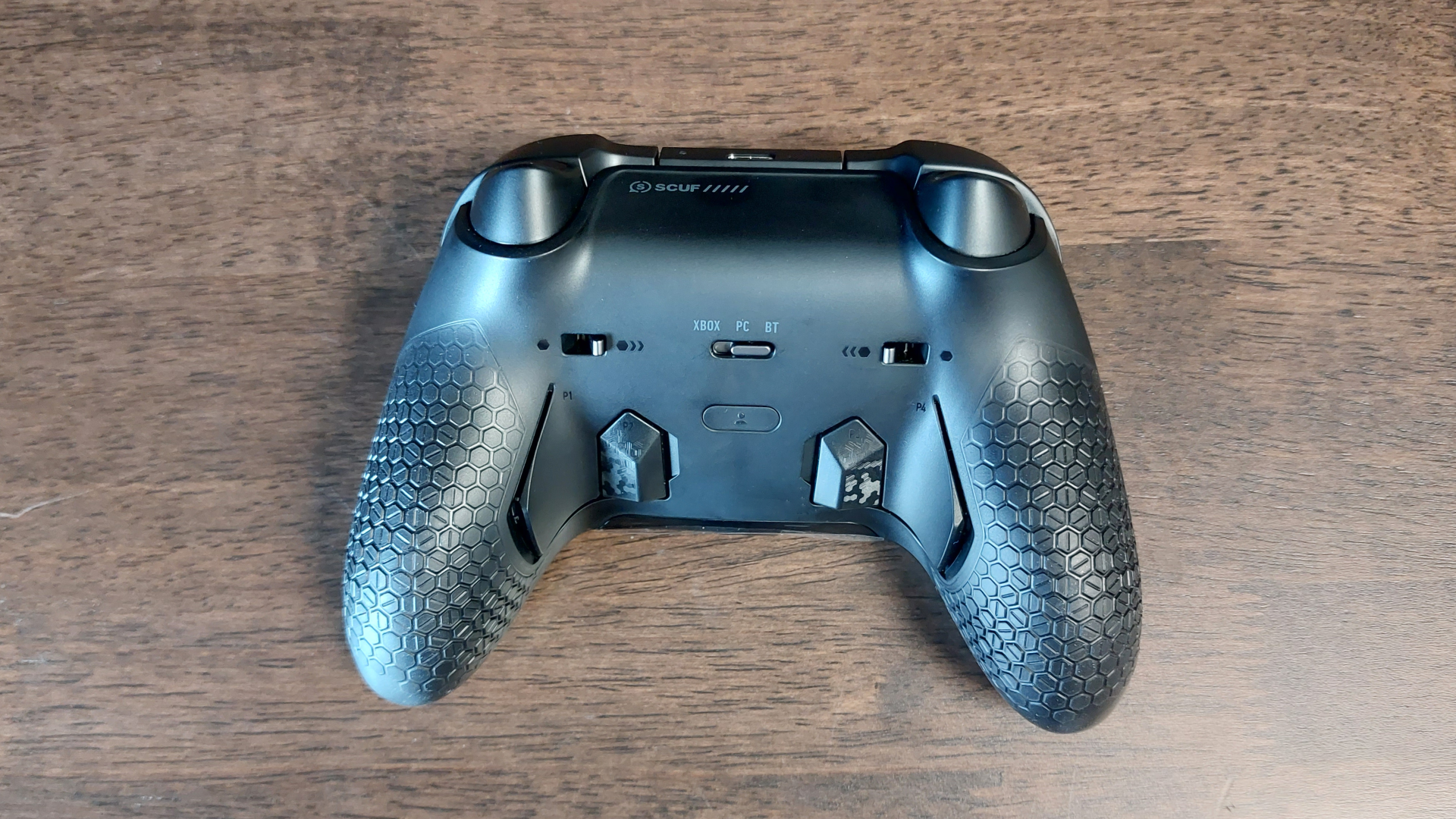
The Scuf Valor Pro also enjoys the same ergonomic silhouette that saw its predecessor slot in so neatly as our top pick for the best wired controller. Besides hefty hand grips making this an exceptionally comfortable controller to hold through hours of play, the angle of approach into the Valor Pro's back buttons makes way more sense for my grabby little raccoon hands.
Not only do you have two elegant little flippers to hook your middle fingers around, but you also have two additional clicky buttons nearby. My review unit came with lightly textured button covers featuring an angular, raised profile. I enjoyed the tactility of these slightly pointy buttons, especially as they're pronounced enough to easily find without also resulting in constant misclicks. But, as I fidget through long play sessions, the same cannot be said for the nearby side-paddles.
Thankfully, it's easy enough to remap these—I may be constantly misclicking, but I might as well map it to something useful. You can't create bespoke button layouts, but rather 'mirror' existing inputs across three different button layout profiles. So, rather than accidentally skipping through important dialogue in Raidou Remastered: The Mystery of the Soulless Army, I can set that right underside paddle to bring up the log to ensure there's nothing I've missed instead (devil summoning is serious business, after all).
It's really easy to either plug your controller in and do this via the very basic companion app, or adjust it via the controller alone (it's also super simple to disable the bonus backside paddles and replace the pointy underside buttons with the inert blanking plates included in the box). Unlike with the Scuf Envision Pro at launch, there's no annoying iCue software integration here, and the Valor Pro works great right out of the box. That said, though not required for setup, its respective companion app is mercifully streamlined and straightforward to use.
Both the standard buttons and the back paddles are pleasingly clicky, though I'm particularly taken with the shoulder bumpers and triggers. For one thing, the triggers offer two levels of resistance you can flick between via a couple of corresponding switches on the controller's underside. For another, the bumpers have an elongated design that drapes over the controller's outermost corners, ensuring they're always in reach for smaller hands—stubby digit squad, represent!
Speaking of features that feel kind to your hands, my Steel Gray Valor Pro review unit features an almost velvet-y finish, rather than the chilly plastic veneer of the Edge. This does show up finger smears like nobody's business, though thankfully, your palms will cover the worst of your greasy sins.
But on the subject of faceplates, the Valor Pro's can be swapped out for something a little more colourful, as with Scuf's other controllers (but the sold separately Valor Pro specific faceplates weren't yet live on Scuf's website at the time of writing). As it's held in place magnetically, popping off the faceplate is a doddle, and also allows you to noodle around with the long, long, analogue stick that Jacob was so taken with in his review (though I'm less convinced it has much application in devil summoning or slaying).
Customisability is a major selling point for Scuf's controllers, and I'm impressed by how sturdy this bit of kit feels while also offering a number of composite parts that are easy to switch out.
Scuf also offers lots of options for styling your own Valor Pro from the ground up. You can pick from some intense single colourway faceplates in black, orange, red, blue, and green, or you can go for a number of obnoxious patterns. Even more egregious, those patterned designs cost $10 more, with creator collaboration faceplates adding $20 on top of what is already a pretty pricey wireless controller. Sometimes a garish bit of kit is fun, and sometimes I enjoy the option of a slightly more tasteful pastel—is that so wrong?
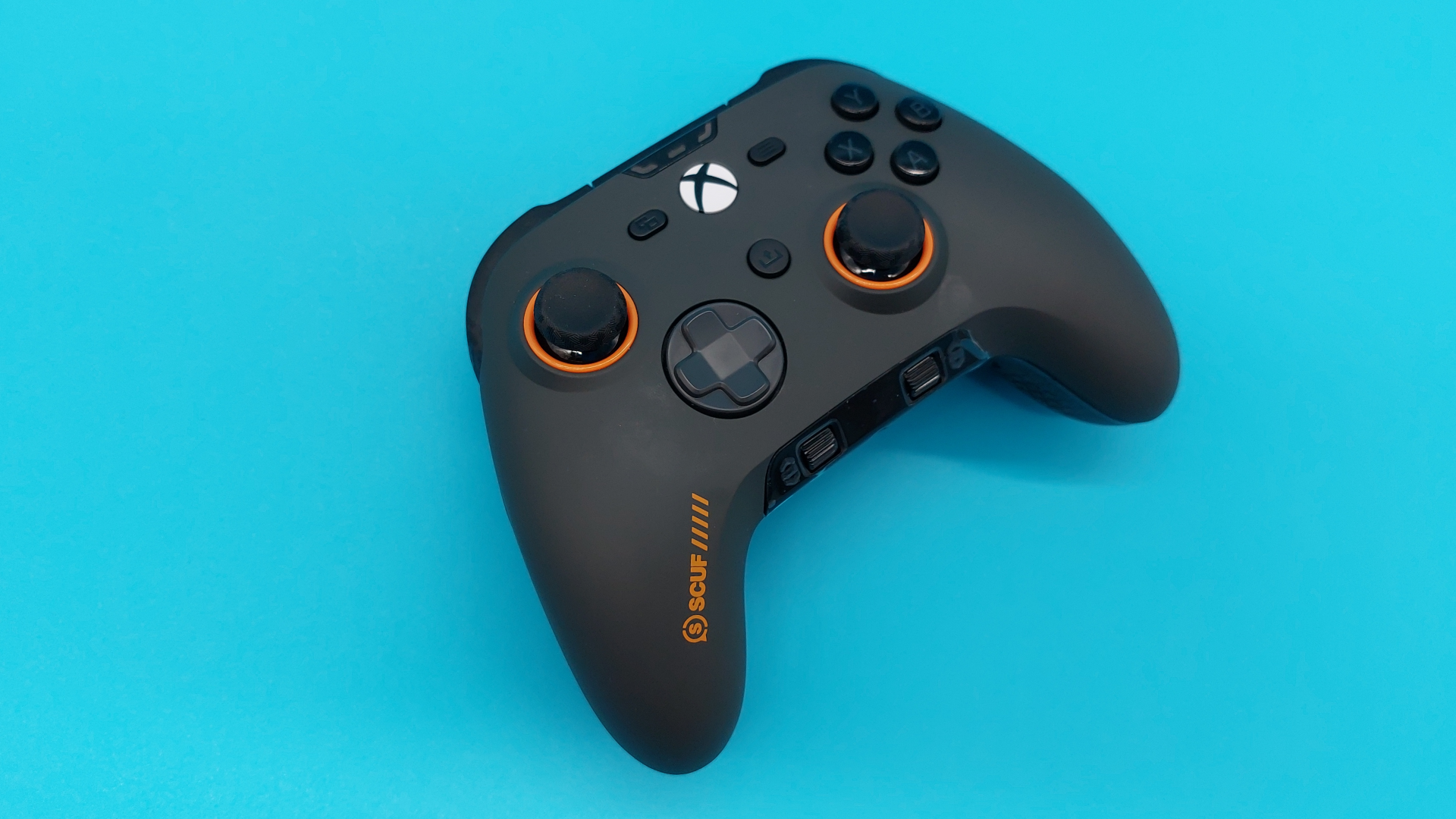
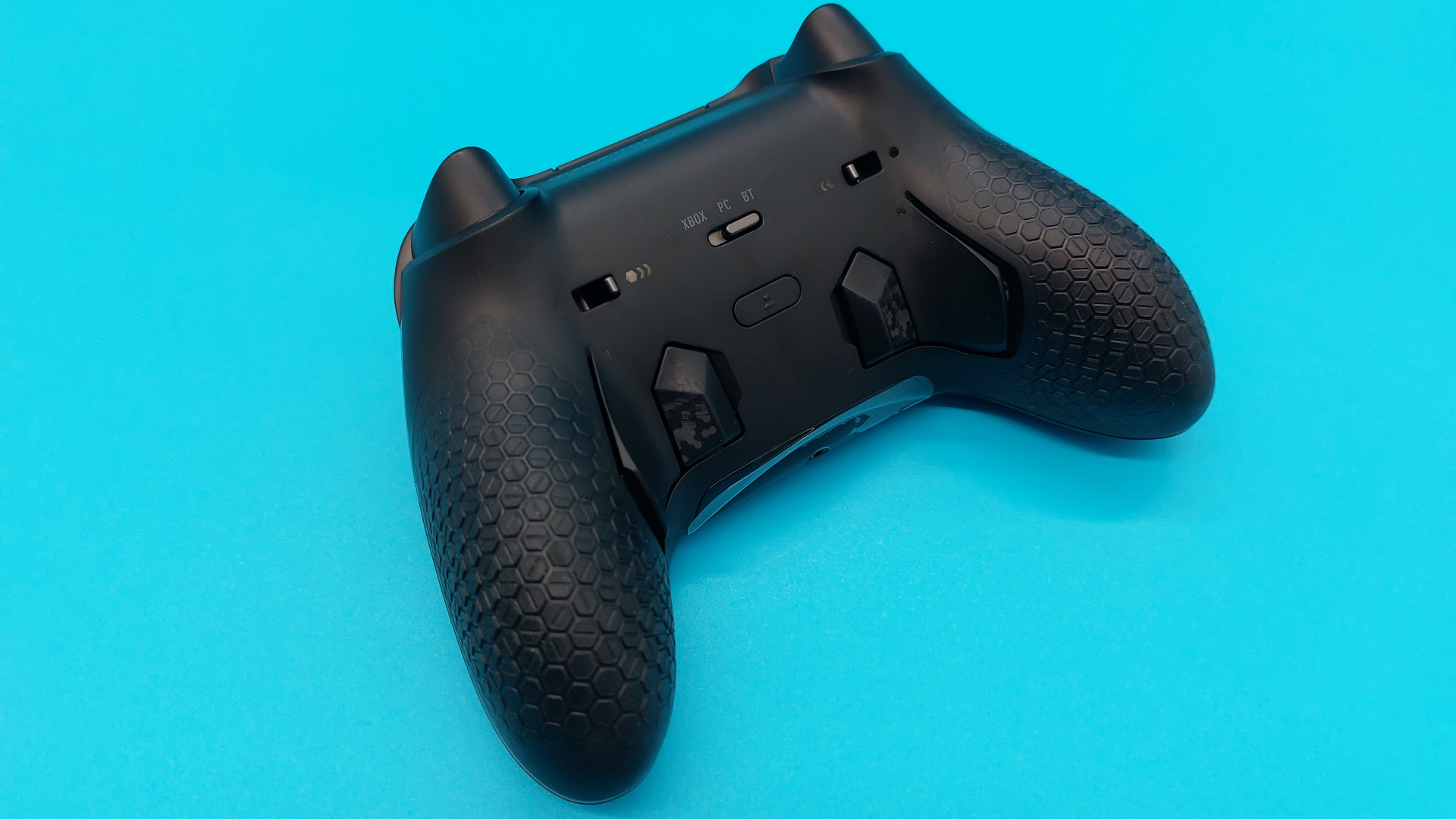
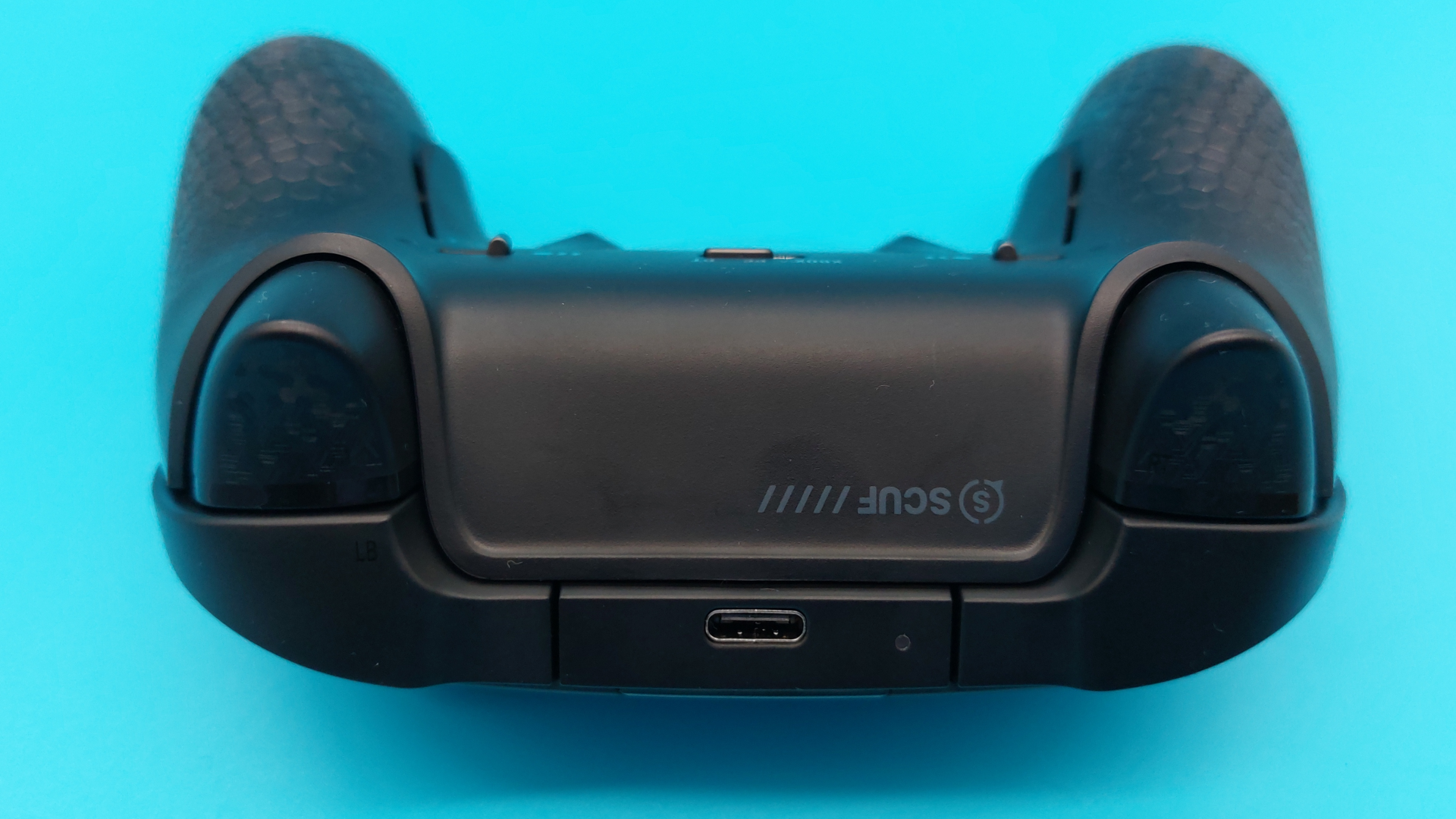
Anyway, matters of taste aside, let's return to the subject of pricing. Without snazzy styling, you're still paying almost $200 for this wireless controller. For as much as I like the Scuf Valor Pro wireless controller, that seems ludicrous to me—especially as that touted Tri-mode connectivity isn't as far ranging as I'd like.
While my PC can detect the Valor Pro over Bluetooth and even connect, I found my inputs wouldn't register—even after I double checked the controller's firmware was up to date via the companion app. I didn't have this issue if I connected the controller to my ageing Samsung Galaxy A52s, though. It turns out the controller's Bluetooth mode isn't technically intended for desktop use. To quote the company's own help pages, "SCUF recommends users to use a wired or low-latency wireless connection when playing on PC. Additionally, SCUF recommends using a Bluetooth connection when using your controller with mobile devices."
✅ Comfort matters to you: The handles here are hefty but feel great in your palm. Add to that ruggedly textured non-slip grips, and the Valor Pro will comfortably see you through many hours of gaming.
✅ You're big on customisation: It's easy peasy to set up mirrored button inputs and swap out the magnetic faceplates. It takes a bit more welly to pop off the thumbstick toppers and back buttons, but it's no less neat.
❌ You really want a Bluetooth PC controller (for some reason): Though great on your phone, your PC may not even register the Valor Pro inputs over Bluetooth. Plugging in the 2.4 GHz dongle is the way to go for wireless gaming here.
❌ You're on a tight budget: This wireless controller costs almost $200 even before you get lost in the weeds of snazzy faceplates or Scuf's smorgasbord of customisation options.
While I like the Valor Pro's 2.4 GHz mode, I would've also enjoyed the opportunity to reclaim one of my PC's USB ports from yet another dongle. To be fair to Scuf, Bluetooth is hardly the most ideal connection for a wireless controller anyway, as this tends to come with the baggage of much higher latency compared to 2.4 GHz mode—neither the previously mentioned Razer Wolverine V3 Pro nor our latest top pick for the best high-end controller, the Razer Wolverine V3 Pro 8K PC, even offers a Bluetooth mode.
With all of that in mind, it makes sense for Scuf to deprioritise the Valor Pro's Bluetooth connection on PC. However, as I'm personally not deep into any kind of competitive scene, I am disappointed that there isn't a better Bluetooth mode for a bit of empty-headed devil mashing.
Before this funky, chunky pad waltzed across my desk, my go-to PC controller was the GameSir Nova Lite. Costing only $25 on a bad day, it still offers Hall effect sticks and remains our budget champion for more good reasons besides. That said, there's no ignoring its cheap and cheerful construction. Besides how cheap it feels in the hand, it also doesn't even feature a 3.5 mm jack, and, for one other cost-cutting thing, its nine-hour battery life also leaves much to be desired.
The Valor Pro is a treat to have and to hold. Indeed, Scuf may yet put out a faceplate I just have to have, but if it were my money on the table, I'd still be happy enough with GameSir's budget Hall effect controller…now, if only that came in other colours besides white and a 'dark purple' that's giving 'navy' rather than 'grape'.
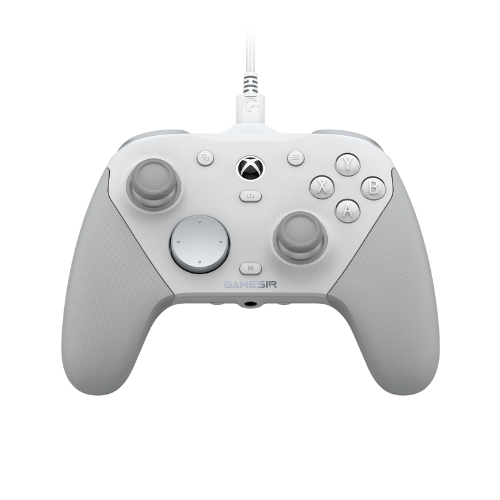
1. Best overall:
GameSir G7 Pro
2. Best budget:
GameSir Nova Lite
3. Best high end:
Razer Wolverine V3 Pro 8K PC
4. Best wired:
Scuf Valor Pro
This wireless pro controller feels great in the hands but comes at a premium I can't really justify. Solid ergonomics and build quality make a strong case, but nearly $200 is asking entirely too much—especially with such a lacking Bluetooth mode.

Jess has been writing about games for over ten years, spending the last seven working on print publications PLAY and Official PlayStation Magazine. When she’s not writing about all things hardware here, she’s getting cosy with a horror classic, ranting about a cult hit to a captive audience, or tinkering with some tabletop nonsense.
You must confirm your public display name before commenting
Please logout and then login again, you will then be prompted to enter your display name.
